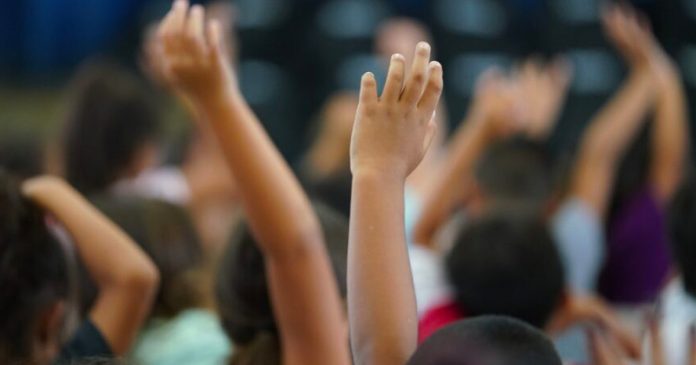Another woke Ontario school board is pushing sexuality onto children, with a Simcoe County District School Board (SCDSB) climate survey asking Grade 7 and 8 students whether they are queer, fluid, pansexual, questioning or bisexual.
The voluntary survey, sent out the first week of April, also asks the 12 and 13-year-old students to pick from eight different gender identities including transgender, non-binary, fluid, boy or girl.
The survey allows students to pick from 10 sexual categories, 33 ethnic/cultural origins, eight race categories and 34 possible spoken languages.
The survey was more than enough to get at least one mom steamed.
The mother, who spoke to True North on condition of anonymity, says it’s not just her. She said there are kids in her daughter’s school who aren’t very comfortable with survey questions related to gender and sexuality.
“I’m not okay with it,” she said.
The mom says the questions are not just “beyond inappropriate” but none of the school’s or board’s business. She says an employer would never be able to ask such questions.
These kinds of issues are not just one-day topics but run continuously through the board’s pedagogy, she says.
In fact about six months ago she said her daughter was called to the principal’s office after someone overheard her mention – quite innocently in the schoolyard – that she thought a certain celebrity was gay.
She was informed she needed to use the “G-word” instead.
“I am not making this up,” the mom said. “She was not using it (the word gay) in a derogatory way.”
While she said she recognizes it is important that confused students or those experiencing racism have “somewhere to go,” she can’t understand the “hyper focus” on these issues.
She said her daughter tells her she just wants to go to school and learn and that she finds it kind of “annoying” that these issues keep coming up.
The SCDSB survey is just the latest example of the woke war on childhood currently being waged by school boards across Ontario. Gender and sexuality is only one of its wings – another is anti-racism as put forward by critical race theory (CRT), which seeks to instill children with senses of guilt or entitlement on the basis of skin colour.
The Simcoe County school board has also put out a resource called “Embedding Anti-Racism and Equity into your teaching: 30 Step Self-Directed Journey – created by board employee Teresa Lau and others.
The staff resource contains 30 tasks for teachers to follow to embed anti-racism and equity into their teaching.
It includes such gems as explaining why the “B” in Black and “I” in Indigenous are capitalized while the “w” in white is not – a definition of privilege and criticism of the ego-driven white saviours we see in such Hollywood movies as The Help.
The resource advises staff not to use the “n” word even when it is contained in literary texts they may be studying.
It also invites staff to check their own privilege using a multi-coloured “wheel of power,” and it discusses dominant (white males) vs. non-dominant groups.
The resource manual also suggests that staff add 30 books to their classroom library to talk to students about racism and 13 read-aloud books by black authors.
Step 20 of the 30-step program uses a pyramid of white supremacy to teach educators how to “decenter whiteness” in the curriculum. By Step 25, teachers are told they should be ready to identify and build a culturally responsive classroom and school.
At the end, the resource advises teachers to “prioritize self-care” since anti-racism work is “hard work.”
The resource, developed a year ago, was posted on Twitter as a reminder the last week of April – until the SCDSB equity team realized it was getting considerable attention above and beyond the board woke educators.
The tweet was subsequently deleted.
The Simcoe mom says educators make her feel like she’s nuts for being a concerned parent and questioning the board’s almost obsessive focus on gender and critical race ideologies.
It is, of course, her right to question that focus, but there’s more to it than that.
The fact that the board’s equity team tried to hide all evidence of what they’re doing suggests that this topsy turvy view of what kids should be learning would not hold up in the court of public opinion.

